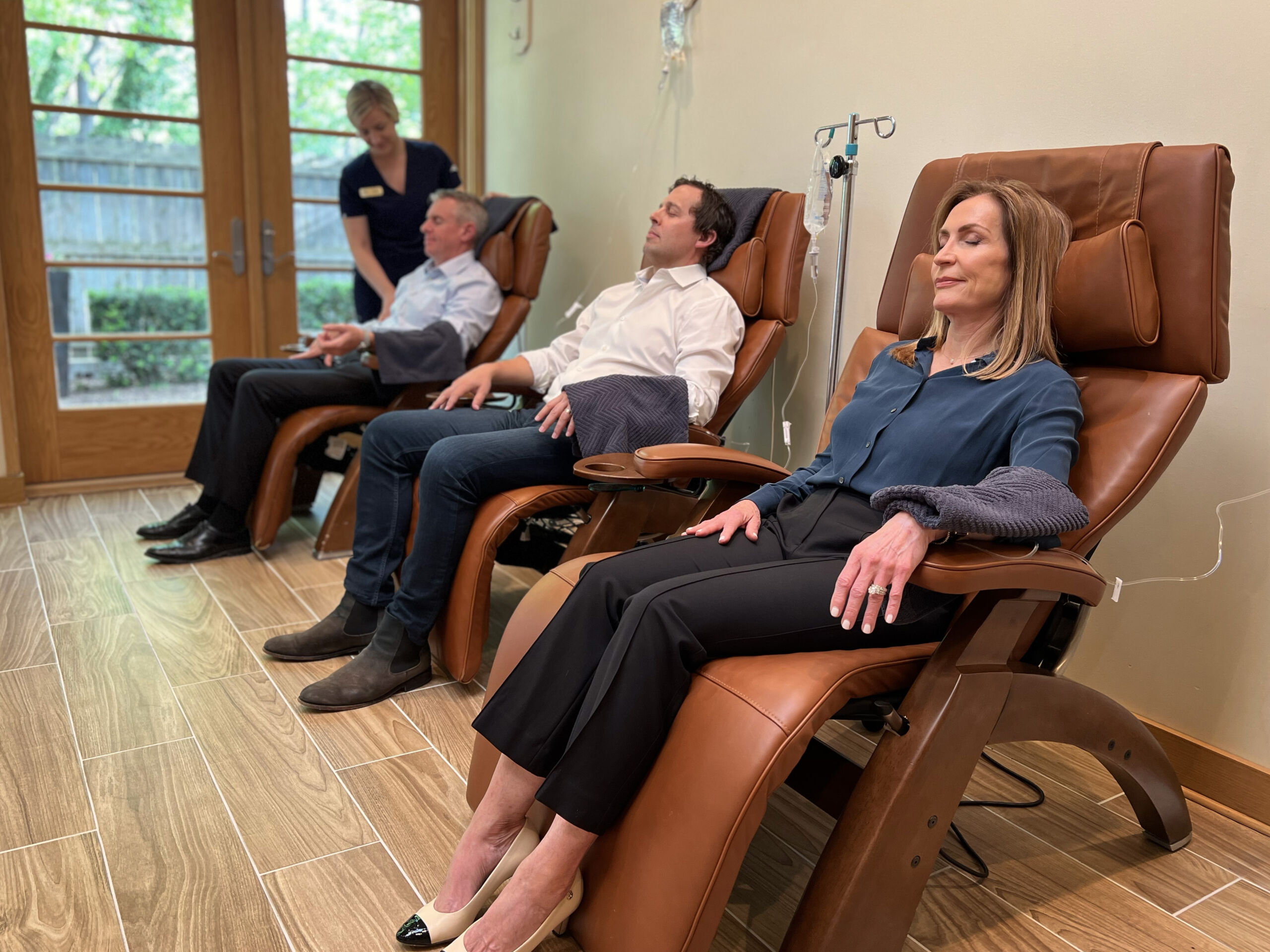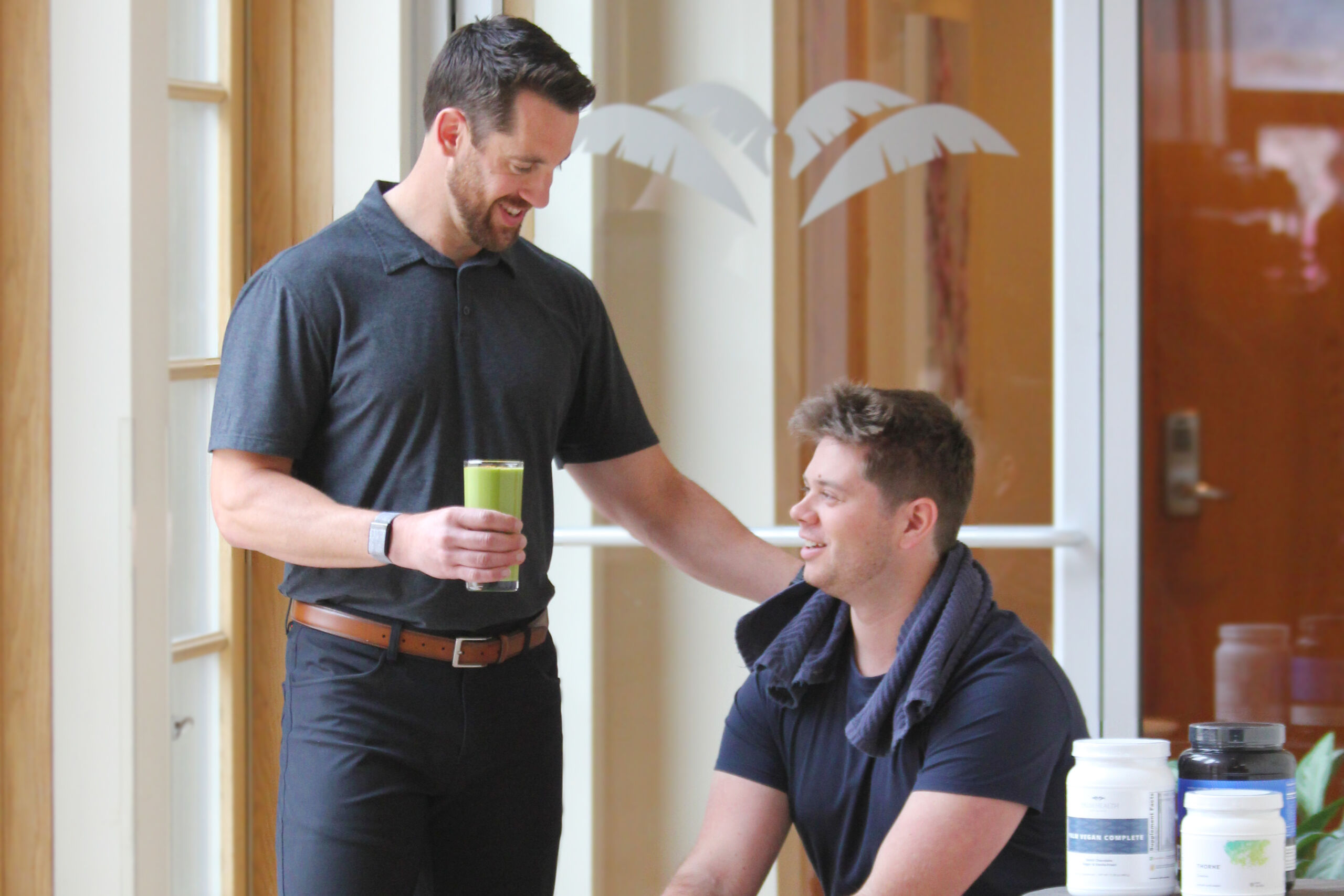Calling all runners: how do you optimize your running performance while staying healthy?
Like any sport, running can take its toll on your body over time, especially if you have improper form, injuries, inadequate nutrition, and unsupportive gear. Whether you run one mile or ten, it’s important to make sure you are employing healthy running habits so you can get the most out of your workout.
1. Improve Your Running Form
Though running may feel like a second-nature movement for many people, there are actually a lot of biomechanics that contribute to proper form. The movement pattern of your legs while running is called your gait. This involves your initial foot contact with the ground, your mid-stance, your take-off, your leg swing, and everything in between.
Your gait is important because striking the ground with the wrong part of your foot or not reaching a high enough knee position during mid-stance or takeoff can put pressure on your joints, increasing wear and tear and decreasing efficiency and performance.
In order to protect your body and improve performance, maintain a running form that is steady rather than bouncy. According to Ashley Kumar, physical therapist at PALM Health, “The higher you lift yourself off the ground between strides, the greater the shock you have to absorb when you land. This causes faster fatigue.” Your arms should swing, but make sure you maintain a stable core, leaning slightly forward with good thoracic controlled rotation.
Overstriding, which is a common issue for runners, doesn’t properly allow your joints to absorb the impact of your foot landing on the ground. It is also a major cause of hip flexor tightness, so if you struggle with tight hips or decreased range of motion in your hips, take a look at your running strides.
Each foot strike should be a soft landing on the ball of your foot directly under a bent knee, rather than way out in front of you. The most efficient cadence, or pace of your foot-striking, is between 170 and 180 steps per minute. This decreases your fatigue and allows you to run longer.
Try running with a metronome to count your steps and adjust to this higher cadence. Think of running lightly across water like a cricket versus splashing the water with a heavy foot pattern like an elephant.
2. Manage and Prevent Common Injuries
“The most common injuries for runners stem from the feet, knees, and hips,” says Ashley Kumar. For example, many runners have excessive pronation, or flat feet, which can cause the knees to cave inward when striking the ground and lead to irritated IT bands and knee pain. If you have flatter feet, consider talking to a physical therapist for recommendations for specific shoes or orthotics that can help with stability.
When you’re running, if there is too much knee bend when your foot lands on the ground, there is increased stress around the kneecap. Over time, that can lead to what is known as “runner’s knee,” which is characterized by pain around the kneecaps, especially with stairs, squats, and lunges.
To improve this and avoid it in the future, work on landing with your foot stacked under your knee. Strengthening your glute muscles and increasing flexibility in your hip flexors and quads will also help you comfortably maintain proper running form to avoid knee pain.
Another thing to keep in mind, according to chiropractor Dr. Jake Schaake, is, “The site of pain is not usually the actual cause of the problem. Most problems are due to a deficiency somewhere else along the chain.”
For example, weak glutes can also lead to hip pain with running. Without adequate glute strength and stability, you may experience your hips dropping or tilting from one side to the other as you run. This increases strain on your joints as well.
Try to think about keeping your waistband level when you’re running and start incorporating some glute strengthening exercises into your fitness routine, such as clamshells, hip abductions, or better yet, side-planks! Physical therapists and chiropractors trained in functional movements are also trained to see and treat problems like these.
3. Fuel Yourself Properly
Because of the way your body produces and uses energy as a runner, one of the best things you can do to support healthy running is to fuel yourself pre- and post-workout. Eat a meal rich in complex carbohydrates like whole grains, legumes, and vegetables 1-2 hours prior to your run, so your body has fuel to burn.
Within 15 minutes of finishing your run, try a glucose supplement drink to replenish your lost glycogen storages. This will ensure you’re not burning muscle during your runs, but fat and glucose instead. Additionally, make sure to eat a meal high in protein in the first two hours after your run. This will assist with muscular and tendon repair. You’ll recover faster and more efficiently, and you’ll continue to become a better and stronger runner.
Nutritional supplements such as pre-workout supplements, amino acid blends, and protein powders can also help your body stay fueled and recover properly. Pre-workout supplements such as ATP Ignite Workout are taken before you exercise and give you a boost of energy to sustain you during your workout.
Amino acid blends such as XymoBolX support your muscle strength and function while you exercise and help prevent muscle loss.
Taking protein powder such as PALM Vegan Complete Protein Powder after your workout will encourage maximum muscle development. All of these supplements are available for purchase at PALM Health.
The number one thing to remember when it comes to nutrition for runners, however? Hydration! Particularly in the summer months when you’re out running in the heat, staying hydrated will allow your body to stay active longer, recover faster, and be more resilient overall.
4. Choose Your Shoes Wisely
Footwear can make or break a runner’s experience. Supportive, good quality shoes are often what can save you from shin splints, foot pain, and even knee and hip pain.
According to Ashley Kumar, “When choosing running shoes, you should go by what feels most comfortable for you, but look for well-cushioned, lighter-weight options for better efficiency and performance.”
It’s also best to find a pair without an exaggerated heel-to-toe drop (the angle of your foot in the shoe from your heel to your toe), so your foot is relatively parallel to the ground, like the Altra shoe brand. If you don’t have toe arthritis, a shoe that allows toe bend in the forefoot is wise to mimic normal foot biomechanics while running.
Remember that your shoes’ life is about 300-500 miles, and they should be replaced regularly when you hit that threshold. This will help avoid more injury and pain.
The bottom line: it’s important to take care of your body to the best of your ability as a runner to avoid injury, perform better, and run more efficiently. “No matter your goal, it is crucial to utilize correct load management to decrease injury risk, increase resilience, and to enjoy running,” says Dr. Schaake.
Consider working with a chiropractor or physical therapist in order to help you gradually and safely increase your capacity, ensure you’re getting proper rest, and make sure you’re applying proper form and technique.
Want to hear directly from chiropractor Dr. Schaake? Join us for his upcoming seminar at PALM Health on Friday, March 15 at 1pm about how muscle mass development is key to your body’s resilience — for runners and everyone!
PALM Health is an innovative, whole-person medical and wellness company that helps people reach and maintain well-being. Our experts in medicine and wellness empower people to transform their health, become more resilient, and feel their personal best in mind and body.








